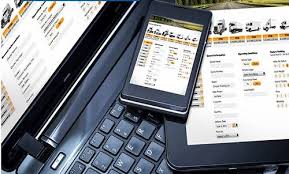How does data labeling operate, and what does it mean? We’ll go over all you need to know about data labeling services and software in this post so that you can make smart business decisions and ultimately create powerful AI and machine learning models.
Data Labeling
Data labeling is a stage of machine learning that seeks to recognize items in unstructured data (such as pictures, videos, audio, or text) and tag them with labels to assist the machine learning model in making precise predictions and estimates. In theory, it should be simple to recognize objects in raw data. In practice, using the appropriate annotation tools to precisely delineate things of interest with the least amount of margin for error is more important. Thousands of elements make up the dataset in question.
Even though unlabeled data by itself doesn’t mean anything to a certified model, it can make your model fail.
How Data Labeling Works
To clean, arrange, and label data, businesses incorporate software, procedures, and data annotators. Machine learning models are built on top of this training data. These labels give analysts the ability to separate certain variables inside datasets, which facilitates the choice of the best data predictors for ML models. The labels specify which data vectors should be used for model training, during which the model improves its ability to predict the future.
Data labeling jobs require “human-in-the-loop (HITL)” engagement in addition to machine support. HITL uses the expertise of human “data labelers” to develop, train, optimize, and test ML models. By feeding the models the datasets that are most pertinent to a particular project, they aid in directing the data labeling process.
Data Labeling Approaches
An essential step in creating a high-performance ML model is data labeling. Although labeling seems straightforward, it’s not always simple to use. As a result, businesses must weigh a variety of aspects and strategies to choose the most effective labeling strategy. A thorough evaluation of the task difficulty, as well as the size, scope, and duration of the project, is advised because each data branding approach has advantages and disadvantages. You can label your data in the following ways:
- Internal labeling: Making use of in-house data scientists makes monitoring easier and improves quality. This strategy, however, often takes more time and is more advantageous to big businesses with lots of resources.
- Synthetic branding: This method, which improves data quality and time efficiency, creates new project data from pre-existing datasets. Synthetic labeling, however, necessitates a lot of computational power, which might raise the cost.
- Programmatic branding – To save time and eliminate the need for human annotation, this automated data branding procedure uses scripts. However, due to the likelihood of technical issues, HITL must continue to be involved in the quality assurance (QA) procedure.
- Outsourcing – Although it can be the best option for complex temporary tasks, creating and maintaining a workflow that is focused on independent contractors can take time. Employing organized data branding teams offers pre-vetted people and pre-built data branding solutions in contrast to using freelancing platforms, which offer full applicant information to speed up the vetting process.
- Crowdsourcing – This method, which allows for micro-tasking and web-based distribution, is speedier and more affordable. Project management, QA, and labor quality, however, differ between crowdsourcing platforms. Recaptcha is among the best-known instances of crowdsourced data branding. This project has two purposes: it improves image data annotation while also preventing bots from being used.
Benefits and Challenges of Data Labeling
While data labeling might speed up a company’s ability to grow, there are usually trade-offs involved. Notwithstanding its high cost, more precise data typically results in better model predictions, therefore, the value it offers is typically well worth the expenditure. Let’s explore some additional significant advantages and difficulties:
Benefits
Data labeling improves the context, quality, and usability of data for individuals, teams, and businesses. Specifically, you can anticipate:
- More Accurate Predictions: Accurate data tagging improves quality control in machine learning algorithms, enabling the model to be trained and to produce the desired results. If not, as the phrase goes, “garbage in, garbage out.” For testing and iterating future models, properly labeled data give the “ground truth” (i.e., how labels represent “real world” circumstances).
- Better Data Usability: Branding data variables inside a model can also make them more usable. For instance, to make a categorical variable more usable for a model, you may reclassify it as a binary variable.
Challenges
Data labeling presents a number of difficulties. The following are a few of the most typical difficulties:
- Costly and time-consuming: Data branding is essential for machine learning models, but it can be expensive in terms of both resources and time. Even if a company adopts a more automated strategy, engineering teams will still be required to build up data pipelines before data processing, and manual branding is likely to be costly and time-consuming.
- Prone to Human Error: Such labeling techniques are vulnerable to human error, which can reduce data quality (e.g., coding errors and manual entry errors). Inaccurate data processing and modeling are the results of this. Checks for quality control are crucial to protecting the integrity of data.
Data Labeling Best Practices
The following best practices maximize data labeling accuracy and effectiveness, regardless of the strategy:
- For human labelers, intuitive and simplified task interfaces reduce the cognitive burden and facilitate context switching.
- Measures the degree of consensus among numerous labelers (human or computer). To determine a consensus score, divide the total number of concurring labels by the total number of labels for each asset.
- Label auditing: Checks the reliability of labels and makes any necessary adjustments.
- Applying one or more previously trained models from one dataset to another is known as transfer learning. This may involve learning while doing multiple things, or multi-tasking.
- Active learning is a class of machine learning techniques and a subset of semi-supervised learning that aids in the selection of the most pertinent datasets by people.
Data Labeling Service
Businesses can convert unmarked or unlabeled data into labeled data with the aid of data labeling service providers. To label the datasets provided by enterprises, they often use a human task force or machine learning-assisted tagging. Providers of data labeling service may or may not provide a platform or interface through which businesses can input unlabeled data and monitor the branding process. Usually, they base their prices on the number of tagged data points. For instance, identifying an image might have a set cost, or they might give permission to annotators who are paid hourly.
Users have more control over the data labeling service thanks to data labeling software, the software equivalent of data labeling service providers. Users of these solutions have control over things like the price, speed, and quality of data branding. These technologies frequently interface with platforms for data science and machine learning and provide features to assess the quality or accuracy of data labeling.
A service provider must meet the following requirements to be eligible for placement in the Data Labeling Services category:
- Access the workforce for data labeling
- Offer hourly, monthly, or per-data-point payment schedules.
- Offer a selection of pre-labeled datasets.
Data Labeling Software
A form of software called data labeling software is used to label or tag data in order to train machine learning models. Machine learning algorithms use large amounts of labeled data to find patterns and make recommendations. The important properties and qualities of the data that will be utilized for training the machine learning model are identified and labeled by humans with the aid of data branding software.
Applications for data branding software include object identification, image and video categorization, and natural language processing. It is a vital tool for creating and refining machine learning models, and it has a significant impact on the precision and efficiency of these models.
Types of Data Labeling Software
Overall, the unique objectives of the project and the kind of data being labeled will determine the kind of data labeling software that is most appropriate for a given assignment.
#1. Manual Data Labeling Software
By attaching labels or tags to certain data points, software for manually branded data enables users to manually label data. This program frequently handles smaller datasets or tasks that demand extreme accuracy and attention to detail.
#2. Automatic Data Branding Software
Automatic data labeling software uses machine learning techniques to automatically label data in accordance with preset rules or patterns. Larger datasets or more routine or repeated activities are frequent uses for this kind of software.
#3. Semi-automatic Data Branding Software
Software for semi-automated data branding includes aspects of both automatic and manual data branding Machine learning algorithms can generate data labels, which people can then assess and modify as necessary.
#4. Image Annotation Software
Software for tagging and annotating photographs and other visual data is known as image annotation software. Bounding boxes, polygon drawing tools, and point annotation tools are a few examples of their features.
Features of Data Labeling Software
Data labeling software frequently includes a number of functionalities, such as:
- Data labeling software enables users to give labels or tags to particular data points, including text, photos, and videos.
- Tools for annotating data: Some data branding programs offer bounding boxes, polygon drawing tools, and point annotation tools. These instruments can be used to draw attention to particular aspects or properties of the data.
- Machine learning algorithms: Particular information branding software uses machine learning algorithms to perform the branding procedure or to produce initial labels for data that can subsequently be checked and adjusted by humans as necessary.
- Data organization and management functions are frequently included in data branding software, including the capability to filter and look for specific data points, monitor progress and completion, and produce reports.
Benefits of Data Labeling Software
Using data labeling software has a number of advantages, including:
- Data labeling software can assist in ensuring that data is consistently and precisely labeled, which is essential for the precision and efficacy of machine learning models.
- Enhanced productivity and efficiency: Data labeling software can assist users in speeding up the branding process so they can label more data in less time. Large datasets and repetitive or routine processes can both greatly benefit from this.
- The ability to assign tasks to many users and track modifications and updates are only a couple of the collaborative options that certain data branding software includes. This can help teams engaged in data branding initiatives communicate and coordinate better.
- Cost savings: By automating typical operations and removing the need for manual labor, data branding software can make data branding projects more affordable.
- Enhanced adaptability and flexibility: Data branding software may be used to label a wide range of data types and is simple to scale up or down to match project demands.
What Is the Purpose of Data Labels?
Because they provide information on a data series or its individual data points, data labels help a chart’s viewers better understand its contents. For instance, it would be challenging to determine that coffee accounted for 38% of total sales in the pie chart below without the data labels.
Is Data Labeling Hard?
Data labeling is not without issues. The following are a few of the most typical difficulties: Time-consuming and expensive: Although data branding is essential for machine learning models, it can be expensive in terms of resources and time.
Who Needs Data Labeling?
Before training or utilizing any machine learning model, data labeling is an essential step. It is used in numerous applications, including image and speech recognition, computer vision, and natural language processing (NLP).
How Do You Use Data Labels?
After clicking the chart, select the Chart Design tab. Select Data Labels from the Add Chart Element menu, then choose a location for the data label choice.
Note: Depending on the type of your chart, the selections will change. Click Data Callout to display your data label inside a text bubble form.
Related Articles
- PRIVATE LABELLING: How It Works, Comparisons, Examples & Best 2023 Practices
- 7 Challenges to Beware of When Starting a Computer Network Business
- HOW TO START A RECORD LABEL: How to Start a Record Label Company 2023






